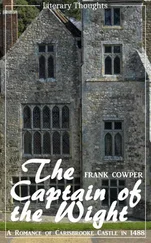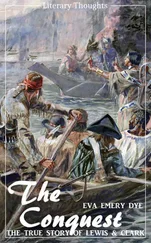Mr. John Rae, a Chief Trader in the service of the Hudson's Bay Company, left Fort Churchill in the beginning of the summer of 1846, with two boats, for the express purpose of completing the survey of Regent's Inlet. He arrived in Repulse Bay in the month of August of that year, and immediately crossed an isthmus, forty-three miles wide, to the inlet, taking one boat with him. Finding that the season was too far advanced for him to complete the survey that year, he determined, with a boldness and confidence in his own resources that has never been surpassed, to winter in Repulse Bay, and to finish his survey of Regent's Inlet on the ice next spring; so that he might be able to return to Churchill and York Factory by open water in the summer of 1847. He therefore recrossed the isthmus again with his boat, and set about collecting provisions and fuel for a ten months' winter. To one less experienced and hardy, the desolate shores of Repulse Bay would have forbidden such an attempt. They yielded neither drift-wood nor shrubby plants of any kind; but Mr. Rae employed part of his men to gather the withered stems of the Andromeda tetragona, a small herbaceous plant which grew in abundance on the rocks, and to pile it in cocks like hay: others he set to build a house of stone and earth, large enough to shelter his party, amounting in all to sixteen; whilst he himself and his Eskimo interpreter were occupied in killing deer for winter consumption. He succeeded in laying up a sufficient stock of venison, and kept his people in health and strength for next year's operations, though not in comfort, for the chimney was so badly constructed for ventilation, that when the fire was lighted it was necessary to open the door, and thus to reduce the temperature of the apartment, nearly to that of the external air. The fire was, therefore, used as seldom as possible, and only for cooking or melting snow to drink. In the spring he completed the survey of Prince Regent's Inlet on foot, thereby proving that no passage existed through it, and confirming the Eskimo report, first made to Sir Edward Parry and afterwards to Sir John Ross. A party of Eskimo, who resided near Mr. Rae in the winter, informed him, through his interpreter, that they had not seen Franklin's ships, thereby excluding the Gulf of Boothia from the list of places to be searched.
Having thus mentioned the opinions most worthy of note, respecting the quarters in which search was to be made, the plans of search adopted by the Admiralty after duly weighing a great variety of suggestions, and the extent of coast and parts of the Arctic Sea embraced in the three expeditions of the summer of 1848, I subjoin the instructions I received from the Admiralty.
Instructions to Sir John Richardson, M. D., 16th March 1848. By the Commissioners for executing the office of Lord High Admiral, &c.
"Whereas we think fit that you should be employed on an overland expedition in search of Her Majesty's ships 'Erebus' and 'Terror,' under the command of Captain Sir John Franklin, which ships are engaged in a voyage of discovery in the Arctic seas, you are hereby required and directed to take under your orders Mr. Rae, who has been selected to accompany you, and to leave England on the 25th instant by the mail steamer for Halifax in Nova Scotia, and New York; and on your arrival at the latter place, you are to proceed immediately to Montreal, for the purpose of conferring with Sir George Simpson, Governor of the Hudson's Bay Company's Settlements, and making arrangements with him for your future supplies and communications.
"You should next travel to Penetanguishene, on Lake Huron, and from thence, by a steamer, which sails on the 1st and 15th of every month of open water, to Saut Ste. Marie, at the foot of Lake Superior, and there embark in a canoe, which, with its crew, will have been provided for you, by that time, by Sir George Simpson.
"Following the usual canoe route by Fort William, Rainy Lake, the Lake of the Woods, Lake Winipeg, and the Saskatchewan River, it is hoped that you will overtake the boats now under charge of Mr. Bell, in July 1848, somewhere near Isle à la Crosse, or perhaps the Methy Portage.
"You will then send the canoe with its crew back to Canada, and having stowed the four boats for their sea voyage, you will go on as rapidly as you can to the mouth of the Mackenzie; leaving Mr. Bell to follow with the heavier laden barge, to turn off at Great Bear Lake, and erect your winter residence at Fort Confidence, establish fisheries, and send out hunters.
"Making a moderate allowance for unavoidable detention by ice, thick fogs, and storms, the examination of the coast between the Mackenzie and the Coppermine Rivers will probably occupy 30 days; but you cannot calculate to be able to keep the sea later than the 15th of September, for, from the beginning of that month, the young ice covers the sea almost every night, and very greatly impedes the boats, until the day is well advanced.
"If you reach the sea in the first week of August, it is hoped you will be able to make the complete voyage to the Coppermine River, and also to coast a considerable part of the western and southern shores of Wollaston Land, and to ascend the Coppermine to some convenient point, where the boats can be left with the provisions ready for the next year's voyage; and you will instruct Mr. Bell to send two hunters to the banks of the river to provide food for the party on the route to Fort Confidence, and thus spare you any further consumption of the pemican reserved for the following summer.
"As it may happen, however, from your late arrival on the coast, or subsequent unexpected detentions, that you cannot with safety attempt to reach the Coppermine, you have our full permission in such a case to return to Fort Good Hope, on the Mackenzie, there to deposit two of the boats, with all the sea stores, and to proceed with the other two boats, and the whole of the crews, to winter quarters on Great Bear Lake.
"And you have also our permission to deviate from the line of route along the coast, should you receive accounts from the Eskimos, which may appear credible, of the crews of the 'Erebus' and 'Terror,' or some part of them, being in some other direction.
"For the purpose of more widely extending your search, you are at liberty to leave Mr. Rae and a party of volunteers to winter on the coast, if, by the establishment of a sufficient fishery, or by killing a number of deer or musk oxen, you may be able to lay up provisions enough for them until you can rejoin them next summer.
"As you have been informed by Captain Sir James Ross, of Her Majesty's ship 'Enterprize,' who is about to be employed on a similar search in another direction, of the probable directions in which the parties he will send out towards the continent will travel, you are to leave a deposit of pemican for their use at the following points—namely, Point Separation, Cape Bathurst, Cape Parry, and Cape Krusenstern; and as Sir James Ross is desirous that some pemican should be stored at Fort Good Hope, for the use of a party which he purposes sending thither in the spring of 1849, you are to make the necessary arrangements with Sir George Simpson for that purpose, as his directions to that effect must be sent early enough to meet the Company's brigade of Mackenzie River boats at Methy Portage, in July 1848.
"Should it appear necessary to continue the search a second summer (1849), and should the boats have been housed on the Coppermine, you are to descend that river on the breaking up of the ice in June 1849, and to examine the passages between Wollaston and Banks's and Victoria Lands, so as to cross the routes of some of Sir James C. Ross's detached parties, and to return to Great Bear Lake in September 1849, and withdraw the whole party from thence to winter on Great Slave Lake, which would be as far south as you will have a prospect of travelling before the close of the river navigation.
Читать дальше












